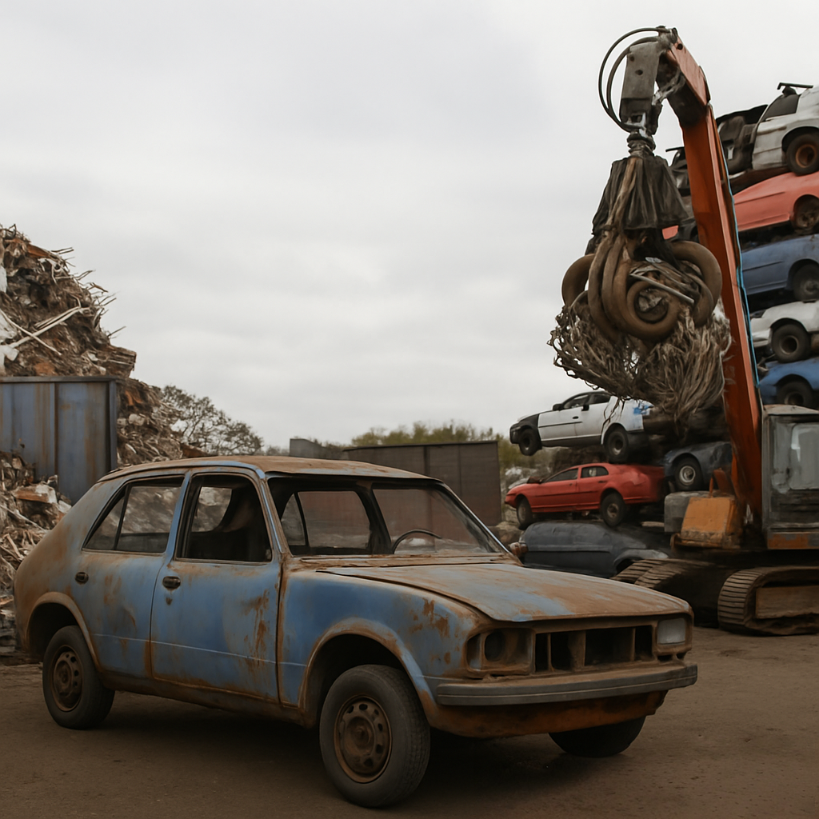Have you ever wondered what happens to a vehicle once it’s no longer roadworthy or repairable? Most people think it’s just junk destined for the landfill — but that’s not the full story. In Melbourne, scrapping a car goes beyond just getting rid of an unwanted vehicle. It’s actually part of a much bigger picture: the city’s growing circular economy.
Whether you’re trading in an old ute, damaged sedan, or rusted-out van, the cash for scrap cars Melbourne industry plays a surprisingly important role in sustainability. It’s not just about earning quick cash — it’s about reducing waste, reusing valuable resources, and building a greener future.

What Is a Circular Economy and Why Does It Matter?
Let’s start with the basics.
In a traditional linear economy, we follow the “take, make, dispose” model. We extract raw materials, manufacture products, use them, and then throw them away — often into overflowing landfills. This system not only wastes resources but also creates massive environmental damage.
The circular economy, on the other hand, flips this model on its head. Instead of discarding products, it focuses on extending their life, reusing materials, and recycling as much as possible. It’s about creating a system that’s sustainable, efficient, and eco-friendly — where waste becomes a valuable input rather than a final output.
And yes, old cars fit perfectly into this framework.
The Role of the Scrap Car Industry in Material Recovery
You might be surprised to learn how much raw material can be recovered from a single vehicle.
From steel and aluminium to rubber, copper, plastic, and even glass — nearly every component of a car can be reused or recycled. When a car is no longer roadworthy, scrap yards and recycling facilities don’t just crush it and toss it away. They dismantle it carefully, sorting parts and materials to be reused or sold.
This process reduces the demand for new raw materials. For example, recycled steel from old cars can be used to make construction materials or even new vehicles. Recovered copper wiring can go into electronics, plumbing, or renewable energy equipment.
In Melbourne, where environmental awareness is steadily rising, this process helps reduce the environmental footprint of both individuals and industries. Every recycled vehicle means fewer resources are mined, processed, and transported — a win for the planet.
Reusing Auto Parts to Reduce Manufacturing Waste
Not all parts of a scrap vehicle are destined for melting or shredding. In fact, many components — such as engines, transmissions, alternators, batteries, and mirrors — still have a lot of life left in them.
These parts are carefully removed, cleaned, tested, and then sold as used auto parts. This is a major benefit to both the environment and consumers. People who can’t afford new parts can often find affordable, high-quality second-hand options. Mechanics also turn to these parts to save customers money and time.
From an environmental point of view, reusing parts delays the manufacturing of new components. It cuts down on energy consumption, industrial emissions, and transport pollution. This is the kind of smart reuse that a circular economy thrives on.
In Melbourne’s car recycling sector, this reuse loop is a core practice — keeping valuable items in circulation instead of sending them to landfill.
Reducing Landfill Pressure in Melbourne
Victoria’s landfills are already under strain, and car waste only adds to the problem. A single car can weigh over a tonne and contain fluids, chemicals, and non-degradable materials. Simply dumping them is a terrible option.
The local car scrapping industry helps avoid this by removing hazardous materials (like oil, brake fluid, and coolant) and recycling or disposing of them safely. Non-recyclable parts are dealt with under strict environmental guidelines. This keeps harmful substances out of the soil, waterways, and air.
By diverting these materials from landfill, scrap vehicle services reduce environmental risks and promote healthier urban living.
Creating Green Jobs and Supporting Local Economy
You might not think of a wrecking yard as a green workplace — but it actually is.
The dismantling, sorting, transporting, and reselling of scrap vehicles supports hundreds of jobs across Melbourne. This includes not just wreckers and drivers, but also admin staff, metal recyclers, mechanics, and logistics professionals. As demand for sustainable practices increases, so does the need for skilled workers in the auto recycling space.
More importantly, this industry stimulates local economic growth. Instead of outsourcing materials from overseas, recycled resources are processed and used right here in Australia. It keeps money circulating in local communities while reducing import-related emissions and delays.
Encouraging Eco-Friendly Practices Among Car Owners
Another benefit of the scrap vehicle sector is the awareness it creates among everyday car owners.
Choosing to scrap a car responsibly instead of abandoning or dumping it encourages people to think more sustainably. It’s a small step, but it sets a mindset of reuse and accountability.
Melbourne residents are now more informed than ever about proper car disposal methods. With growing access to free car removal services, responsible scrapping is easier and more convenient. Some government incentives and local programs also support environmentally friendly vehicle recycling — promoting a cleaner city and a better future.
Conclusion
The cash for scrap cars Melbourne industry is more than just a way to offload an old vehicle. It’s an active part of the circular economy, quietly contributing to sustainability goals, resource recovery, job creation, and landfill reduction.
When you recycle a car, you’re not just clearing up space in your garage — you’re helping Melbourne build a greener, smarter future. So the next time you see a rusty car being towed away, know that it’s the beginning of a new cycle, not the end.
